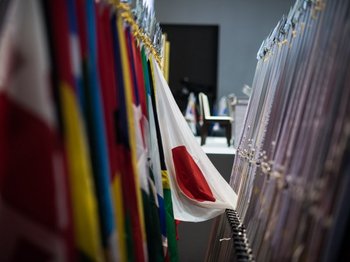Last week, I was in Sendai, Japan, for the World Conference on Disaster Risk Reduction (DRR) organised by the United Nations. After two nights of negotiation, and as Cyclone Pam destroyed vast parts of Vanuatu, an agreement was reached that shows a much more structural concern for disaster than ever before.
Twenty years ago, in Yokohama, the first world conference of disaster risk reduction was a small event. It delivered a contested agreement mainly viewing disasters as a natural phenomenon, against the then already current theories of the social production of disaster and against the body of practice of NGOs exposing grassroots vulnerabilities as a major driver of disaster.
In 2005, the Hyogo Framework of Action (HFA) was agreed in Kobe. Only three weeks after the Asian tsunami, what was meant to be a low key conference was thrown into the limelight and the HFA negotiations came out at a much higher level.
The HFA made a real difference in disaster governance. It highlighted social drivers of vulnerability and contained a governance model involving all stakeholders in disaster risk reduction. As a result, countries all over the world have established platforms composed of government, private sector and civil society to jointly plan and implement DRR.
The current Sendai Framework for Disaster Risk Reduction, reached under the shadow of another mega disaster this time in Vanuatu, pushes policy beyond HFA in different ways. In addition to social vulnerability, the Sendai framework pays ample attention to environmental aspects. There is a strong recognition that reconstruction of eco-systems and nature-based solutions are crucial in the protection against disaster. Disaster risk reduction, more than before, is seen as a policy concern that cuts across many sectors, including health and education.

Photo credit: Flickr / UN ISDR
The Sendai framework puts governments at the centre of DRR. In this respect, the framework is a child of its time, when civil society is seeing its space shrinking in many countries. While Hyogo called for broad platforms, the spirit of Sendai is to call upon stakeholders to join the government in concerted efforts.
A major gap in the Sendai framework is that it almost completely ignores the effect of violence and conflict, even though these are often major drivers of disaster vulnerability and major stumbling blocks in disaster management. The drought in the Horn of Africa of 2011 is a case in point. Due to timely and adequate response, Ethiopia and Kenya were able to save more lives, but Somalia suffered heavily and counted an estimated 200,000 deaths.
One major factor was that the long ongoing conflict in Somalia had rendered the population more vulnerable and eroded local institutions, while the militant Islamist organisation Al Shabaab prevented the entry of international aid. The Sendai framework assumes a willing and capable government in the centre of DRR, and gives no recognition of, or direction for, the many situations where this condition is unfulfilled.
The Sendai framework states that disaster risk reduction is conditional upon sustainable development. In the last decade, however, we have seen a failure to properly integrate sustainable development in DRR.
Due to the interplay of different processes, disasters are increasing and intensifying. Climate change affects the frequency and intensity of natural hazards and more than 90% of disasters are weather-related. Bad land use, planning, water management, and mismanagement of infrastructure renders countries increasingly vulnerable to floods and droughts. Social inequality and political exclusion makes poor people highly vulnerable to the effects of disaster. Many of the causes of disasters are linked to a lack of development, and sustainable development planning should take this better into account. Here we find the major weakness of the Sendai framework. Although it is good news to have a comprehensive overview, the real difference to disaster risk response is made in other arenas: economic reform, reduction of inequality and a serious commitment to sustainable development.
Successful action for DRR therefore needs to be factored into the upcoming negotiations on climate change, the financing of climate change adaptation and the sustainable development goals.